Planning worship?
Check out our sister site, ZeteoSearch.org,
for 20+ additional resources related to your search.
- |
User Links
Person Results
Joseph Barnby
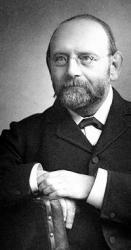
1838 - 1896 Person Name: Joseph Barnby, 1838-1896 Meter: 7.5.7.5 D Composer of "NEW YEAR" in Baptist Hymnal 1956 Joseph Barnby (b. York, England, 1838; d. London, England, 1896) An accomplished and popular choral director in England, Barnby showed his musical genius early: he was an organist and choirmaster at the age of twelve. He became organist at St. Andrews, Wells Street, London, where he developed an outstanding choral program (at times nicknamed "the Sunday Opera"). Barnby introduced annual performances of J. S. Bach's St. John Passion in St. Anne's, Soho, and directed the first performance in an English church of the St. Matthew Passion. He was also active in regional music festivals, conducted the Royal Choral Society, and composed and edited music (mainly for Novello and Company). In 1892 he was knighted by Queen Victoria. His compositions include many anthems and service music for the Anglican liturgy, as well as 246 hymn tunes (published posthumously in 1897). He edited four hymnals, including The Hymnary (1872) and The Congregational Sunday School Hymnal (1891), and coedited The Cathedral Psalter (1873).
Bert Polman
Joseph Barnby
L. Tuttiett

1825 - 1897 Person Name: Rev. L. Tuttlett Meter: 7.5.7.5 D Author of "Father, let me dedicate" in The Book of Common Praise Laurence Tuttiett was born at Colyton, Devon, in 1825; was educated at Christ Hospital, and at King's College, London; ordained Deacon, 1848, Priest, 1849; entered upon the living of Lea Marston, Coleshill, 1854, and subsequently was appointed Curate of S. Paul's, Knightsbridge, London. He is the author of several volumes and tracts.
--Annotations of the Hymnal, Charles Hutchins, M.A. 1872.
==================
Tuttiett, Lawrence, son of John Tuttiett, surgeon in the R.N., was born at Cloyton, Devonshire, in 1825, and educated at Christ's Hospital, and King's College, London. It was originally purposed that he should follow the medical profession, but, abandoning it for the ministry, he took Holy Orders in 1848. In 1854 he became vicar of Lea Marston, Warwickshire; and in 1870 incumbent of the Episcopal Church of St. Andrews, Scotland. He was also preferred to a prebendaryship in St. Ninian's Cathedral, Perth, in 1880. He is the author of several manuals of prayers, published by the Society for Promoting Christian Knowledge and other prose works, and also of:—
(1) Hymns for Churchmen, 1854; (2) Counsels of a Godfather, 1861; (3) Hymns for the Children of the Church, 1862; (4) Germs of Thought on the Sunday Services, 1864; (5) Through the Clouds; Thoughts in Plain Verse, 1866.
From those works and other sources the following hymns have come into common use:—
1. As calmly in the glowing west. Evening.
2. Come, our Father's voice is calling. Confirmation. Appeared in his Hymns for the Children of the Church, 1862, in 6 stanzas of 4 lines. It passed into Mrs. C. Brock's Children's Hymn Book, 1881.
3. Grant us Thy light that we may know. Divine Guidance. Included in his Germs of Thought, &c, 1864, in 6 stanzas of 4 lines. In Horder's Congregational Hymn Book, 1884; the Universal Hymn Book, 1885, it begins, “O grant us light that we may know."
4. I come, 0 Father kind. Holy Communion.
5. Lo, like a bride, in pure array. Septuagesima.
6. No sign we ask from heaven above. After Holy Baptism. Published in his Hymns for Churchmen, 1854, in 4 stanzas of 6 lines. It has passed into several collections, includ¬ing the S. P. C. K. Church Hymns, 1871, Thring's Collection, 1882, &c.
7. Now, eternal Father, bless. Holy Baptism. In his Hymns for the Children of the Church, 1862, in 3 stanzas of 6 lines, and Mrs. Brock's Children's Hymn Book, 1881. In the latter it is attributed to Bishop Maclagan in error.
8. 0 happy Christian children. Divine Protection. From his Hymns for the Children of the Church, 1862, into Mrs. Brock's Children's Hymn Book, 1881, &c.
9. 0 Jesu, ever present. The Good Shepherd. Published in his Germs of Thought, 1864; the S. P.C. K. Church Hymns, 1871, and many others.
10. Shepherd, good and gracious. The Good Shepherd. In his Hymns for the Children of the Church, 1862; Mrs. Brock's Children's Hymn Book, 1881, &c.
11. Sometimes o'er our pathway. In time of Trouble. From his Hymns for the Children of the Church, 1862, in 3 st. of 8 1., into Mrs. Brock's Children's Hymn Book, 1881.
12. When the world is brightest. Litany to the Saviour. Published in his Through the Clouds, &c, 1866, in 10 stanzas of 8 lines, with the note :—"Those words were written for the music of a Roman Litany 'Ave Stella Maria.'" This Litany is in extensive use.
13. Who is this? the long expected. Advent.
In addition to these, several of Mr. Tuttiett's hymns are annotated under their respective first lines, the most popular of which are, "Father, let me dedicate"; "Go forward, Christian soldier"; and "0 quickly come, dread Judge of all." Mr. Tuttiett's hymns are characterised by smoothness of rhythm, directness of aim, simplicity of language, and deep earnestness. Those for special services and seasons are of great merit. He died May 21, 1897.
-- John Julian, Dictionary of Hymnology (1907)
==================
Tuttiett, L., p. 1188, ii. He was born at Colyton, not Cloyton, Devonshire, in 1825. His hymns "As now Thy children lowly kneel (For the Young), and "Give light. O Lord, that we may learn" (The Light of Life) are in Hymns Ancient & Modern, 1904.
--John Julian, Dictionary of Hymnology, New Supplement (1907)
=====================
See also in:
Hymn Writers of the Church
L. Tuttiett
Mary Baker Eddy
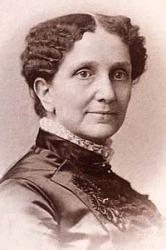
1821 - 1910 Meter: 7.5.7.5 D Author of ""Feed My Sheep"" in Christian Science Hymnal (Rev. and enl.) Mary Baker Eddy (born Mary Morse Baker, July 16, 1821 – December 3, 1910) is the discoverer and founder of Christian Science, a religious movement that emerged in New England in the late 19th century. Eddy is the author of the movement’s textbook, Science and Health with Key to the Scriptures (first published in 1875), and founder of The First Church of Christ, Scientist (1892). She also founded The Christian Science Publishing Society (1898).
Mary Morse Baker was born in Bow, New Hampshire, the youngest of six children of Abigail and Mark Baker. Raised a Congregationalist, she came to reject teachings such as predestination and original sin, but she loved the biblical accounts of early Christian healing.
Mark Baker, Eddy’s father, firmly believed in the Congregational church’s doctrine of predestination, but Eddy couldn’t accept the idea that the loving God she knew could condemn people to eternal damnation. Eddy eventually joined the Congregational church at Sanbornton Bridge (present-day Tilton), New Hampshire, when she was seventeen.
A fragile child, Eddy suffered from a number of physical complaints. Her letters from this time, now at The Mary Baker Eddy Library in Boston, Massachusetts, portray her sufferings and search for relief. In an effort to find health in her early adulthood, she tried homeopathy, dietary cures, mesmerism, hydropathy, and other popular treatments of the day. None of those methods brought lasting health.
On December 10, 1843, Eddy married George Washington Glover. He died of yellow fever on June 27, 1844, a little over three months before the birth of their only child, George Washington Glover. As a single mother in poor health, Eddy wrote some political pieces for the New Hampshire Patriot, as writing was one of the few ways a woman in her position could make money.
Eddy continued to struggle with poor health, and her son was put into the care of neighbors by her father and stepmother. She married Dr. Daniel Patterson, a dentist, in 1853, hoping he would adopt the young boy. Patterson signed papers to that effect on their wedding day, but failed to follow through on his promise. In 1873, Eddy divorced Daniel Patterson on the grounds of desertion.
In October 1862, Eddy became a patient of Phineas Quimby, a magnetic healer from Maine. She benefited temporarily from his treatment. From 1862 to 1865 Quimby and Eddy engaged in lengthy discussions about healing methods practiced by Quimby and others. Eddy’s conclusions from her own scriptural study and healing practice differed from Quimby’s teachings. In 1866, Eddy had a substantial physical healing while reading about Jesus’ healings in the Bible, without employing any medical forms of treatment. This pivotal event showed her that Jesus’ teachings were practical throughout all time.
She devoted the next three years of her life to biblical study and called her discovery Christian Science. In her autobiography, Retrospection and Introspection, Eddy writes, “I then withdrew from society about three years,—to ponder my mission, to search the Scriptures, to find the Science of Mind that should take the things of God and show them to the creature, and reveal the great curative Principle,—Deity” (pp. 24–25). Eddy became well known as a healer, and first-hand accounts state that she performed miracles similar to miracles performed by Jesus.
In 1875, Eddy published her discovery in a book titled Science and Health (later retitled Science and Health with Key to the Scriptures), which she called the textbook of Christian Science. As worded in the final edition, she wrote, “In the year 1866, I discovered the Christ Science or divine laws of Life, Truth, and Love, and named my discovery Christian Science” (p. 107). During these years she taught her new ideas to hundreds of people. Many of her students became healers themselves. The final chapter of Science and Health, titled “Fruitage,” contains testimonies of people who were healed by studying her book.
In 1877 she married Asa Gilbert Eddy, a student of Christian Science and an active worker in the movement.
Eddy founded The Christian Science Journal in 1883, a monthly magazine “designed to put on record the divine Science of Truth” (The First Church of Christ, Scientist, and Miscellany, p. 353). Eddy founded The Christian Science Publishing Society in 1898, which became the publishing home for numerous publications launched by her and her followers. The Christian Science Sentinel, a weekly religious periodical written for a more general audience, and The Herald of Christian Science, a religious magazine with editions in many languages, were established in 1898. In 1908, at the age of 87, Eddy founded The Christian Science Monitor, a daily newspaper. These periodicals continue to be published today.
Five of Eddy’s poems were set to music and included in the Christian Science Hymnal during her lifetime: “Christmas Morn,” “Mother’s Evening Prayer,” “Christ my Refuge,” “Communion Hymn,” and “Feed My Sheep.” When the hymnal was revised in 1932, two more of her poems were added: “Love” and “Satisfied.” More information about these particular poems, their original publication and inclusion in the hymnal, is available from The Mary Baker Eddy Library.
Eddy died on the evening of December 3, 1910, at her home in Chestnut Hill, Massachusetts. Hundreds of tributes appeared in newspapers around the world, including The Boston Globe, which wrote, “She did a wonderful—an extraordinary— work in the world and there is no doubt that she was a powerful influence for good.”
Today, there are Christian Science churches in 76 countries.
This biography was written in collaboration with The Mary Baker Eddy Library and the staff of “Hymns 2016” on JSH-Online. More information about Mary Baker Eddy is available at MBELibrary.org. Submitted 8 August 2016.
Mary Baker Eddy
William Walsham How

1823 - 1897 Person Name: William H. How Meter: 7.5.7.5 D Author of "E KA LOGOU ME KAKOU" in Na Himeni Haipule Hawaii William W. How (b. Shrewsbury, Shropshire, England, 1823; d. Leenane, County Mayo, Ireland, 1897) studied at Wadham College, Oxford, and Durham University and was ordained in the Church of England in 1847. He served various congregations and became Suffragan Bishop in east London in 1879 and Bishop of Wakefield in 1888. Called both the "poor man's bishop" and "the children's bishop," How was known for his work among the destitute in the London slums and among the factory workers in west Yorkshire. He wrote a number of theological works about controversies surrounding the Oxford Movement and attempted to reconcile biblical creation with the theory of evolution. He was joint editor of Psalms and Hymns (1854) and Church Hymns (1871). While rector in Whittington, How wrote some sixty hymns, including many for children. His collected Poems and Hymns were published in 1886.
Bert Polman
===============
How, William Walsham, D.D., son of William Wybergh How, Solicitor, Shrewsbury, was born Dec. 13, 1823, at Shrewsbury, and educated at Shrewsbury School and Wadham College, Oxford (B.A. 1845). Taking Holy Orders in 1846, he became successively Curate of St. George's, Kidderminster, 1846; and of Holy Cross, Shrewsbury, 1848. In 1851 he was preferred to the Rectory of Whittington, Diocese of St. Asaph, becoming Rural Dean in 1853, and Hon. Canon of the Cathedral in 1860. In 1879 he was appointed Rector of St. Andrew's Undershaft, London, and was consecrated Suffragan Bishop for East London, under the title of the Bishop of Bedford, and in 1888 Bishop of Wakefield. Bishop How is the author of the Society for Promoting Christian Knowledge Commentary on the Four Gospels; Plain Words , Four Series; Plain Words for Children; Pastor in Parochia; Lectures on Pastoral Work; Three All Saints Summers, and Other Poems , and numerous Sermons , &c. In 1854 was published Psalms and Hymns, Compiled by the Rev. Thomas Baker Morrell, M.A., . . . and the Rev. William Walsham How, M.A. This was republished in an enlarged form in 1864, and to it was added a Supplement in 1867. To this collection Bishop How contributed several hymns, and also to the S. P. C. K. Church Hymns , of which he was joint editor, in 1871. The Bishop's hymns in common use amount in all to nearly sixty.
Combining pure rhythm with great directness and simplicity, Bishop How's compositions arrest attention more through a comprehensive grasp of the subject and the unexpected light thrown upon and warmth infused into facia and details usually shunned by the poet, than through glowing imagery and impassioned rhetoric. He has painted lovely images woven with tender thoughts, but these are few, and found in his least appreciated work. Those compositions which have laid the firmest hold upon the Church, are simple, unadorned, but enthusiastically practical hymns, the most popular of which, "O Jesu, Thou art standing"; "For all the Saints who from their labours rest," and "We give Thee but Thine own," have attained to a foremost rank. His adaptations from other writers as in the case from Bishop Ken, "Behold, the Master passeth by," are good, and his Children's hymns are useful and popular. Without any claims to rank as a poet, in the sense in which Cowper and Montgomery were poets, he has sung us songs which will probably outlive all his other literary works.
The more important of Bishop How's hymns, including those already named, and "Lord, Thy children guide and keep"; "O Word of God Incarnate"; "This day at Thy creating word"; "Who is this so weak and helpless"; and others which have some special history or feature of interest, are annotated under their respective first lines. The following are also in common use:—
i. From Psalms & Hymns, 1854.
1. Before Thine awful presence, Lord. Confirmation.
2. Jesus, Name of wondrous love [priceless worth]. Circumcision. The Name Jesus .
3. Lord Jesus, when we stand afar. Passiontide.
4. O blessing rich, for sons of men. Members of Christ.
5. 0 Lord of Hosts, the earth is Thine. In time of War.
6. O Lord, Who in Thy wondrous love. Advent.
ii. From Psalms & Hymns, enlarged, 1864.
7. Lord, this day Thy children meet. Sunday School Anniversary.
iii. From Supplement to the Psalms & Hymns, 1867.
8. Hope of hopes and joy of joys. Resurrection.
9. 0 daughters blest of Galilee. For Associations of Women.
10. O happy feet that tread. Public Worship.
11. With trembling awe the chosen three. Transfiguration.
iv. From Parish Magazine, 1871, and Church Hymns, 1871.
12. O Jesu, crucified for man. Friday.
13. Yesterday, with worship blest. Monday.
v. From the S. P. C. K. Church Hymns. 1871.
14. Bowed low in supplication. For the Parish.
15. Great Gabriel sped on wings of light. Annunciation, of the Blessed Virgin Mary.
16. O blest was he, whose earlier skill. St. Luke.
17. O God, enshrined in dazzling light. Omnipresence. Divine Worship .
18. O heavenly Fount of Light and Love. Witsuntide.
19. O Lord, it is a blessed thing. Weekdays.
20. 0 One with God the Father. Epiphany.
21. O Thou through suffering perfect made. Hospitals.
22. Rejoice, ye sons of men. Purification of the B. V. M.
23. Summer suns are glowing. Summer.
24. The year is swiftly waning. Autumn.
25. Thou art the Christ, O Lord. St. Peter.
26. To Thee our God we fly. National Hymn.
27. Upon the holy Mount they stood. Transfiguration and Church Guilds.
28. We praise Thy grace, 0 Saviour. St. Mark.
vi. From the S. P. C. K. Children's Hymns, 1872.
29. Behold a little child. Jesus the Child's Example.
30. Come, praise your Lord and Saviour. Children's Praises.
31. It is a thing most wonderful. Sunday School Anniversary.
32. On wings of living light. Easter.
Bishop How's hymns and sacred and secular pieces were collected and published as Poems and Hymns, 1886. The Hymns, 54 in all, are also published separately. He d. Aug. 10, 1897.
--John Julian, Dictionary of Hymnology (1907)
===================
How, W. W., p. 540, i. He died Aug. 10, 1897. His Memoir, by F. D. How, was published in 1898.
--John Julian, Dictionary of Hymnology, New Supplement (1907)
William Walsham How
Felix Mendelssohn-Bartholdy
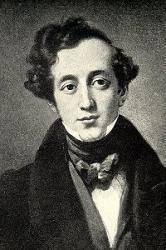
1809 - 1847 Person Name: F. Mendelssohn, 1809-1847 Meter: 7.5.7.5 D Arranger of "MUNICH" in Na Himeni Haipule Hawaii Felix Mendelssohn-Bartholdy (b. Hamburg, Germany, 1809; d. Leipzig, Germany, 1847) was the son of banker Abraham Mendelssohn and the grandson of philosopher Moses Mendelssohn. His Jewish family became Christian and took the Bartholdy name (name of the estate of Mendelssohn's uncle) when baptized into the Lutheran church. The children all received an excellent musical education. Mendelssohn had his first public performance at the age of nine and by the age of sixteen had written several symphonies. Profoundly influenced by J. S. Bach's music, he conducted a performance of the St. Matthew Passion in 1829 (at age 20!) – the first performance since Bach's death, thus reintroducing Bach to the world. Mendelssohn organized the Domchor in Berlin and founded the Leipzig Conservatory of Music in 1843. Traveling widely, he not only became familiar with various styles of music but also became well known himself in countries other than Germany, especially in England. He left a rich treasury of music: organ and piano works, overtures and incidental music, oratorios (including St. Paul or Elijah and choral works, and symphonies. He harmonized a number of hymn tunes himself, but hymnbook editors also arranged some of his other tunes into hymn tunes.
Bert Polman
Felix Mendelssohn-Bartholdy
Ruth C. Duck
1947 - 2024 Meter: 7.5.7.5 D Author of "God, My Help and Hiding Place" in Psalms for All Seasons
Ruth C. Duck
Fred Kaan
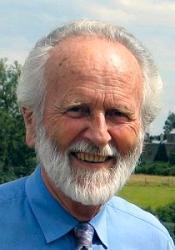
1929 - 2009 Person Name: Fred Kaan, 1929- Meter: 7.5.7.5 D Author of "Almond Trees, Renewed in Bloom" in Singing the Living Tradition Fred Kaan Hymn writer. His hymns include both original work and translations. He sought to address issues of peace and justice. He was born in Haarlem in the Netherlands in July 1929. He was baptised in St Bavo Cathedral but his family did not attend church regularly. He lived through the Nazi occupation, saw three of his grandparents die of starvation, and witnessed his parents deep involvement in the resistance movement. They took in a number of refugees. He became a pacifist and began attending church in his teens.
Having become interested in British Congregationalism (later to become the United Reformed Church) through a friendship, he was attended Western College in Bristol. He was ordained in 1955 at the Windsor Road Congregational Church in Barry, Glamorgan.
In 1963 he was called to be minister of the Pilgrim Church in Plymouth. It was in this congregation that he began to write hymns. The first edition of Pilgrim Praise was published in 1968, going into second and third editions in 1972 and 1975. He continued writing many more hymns throughout his life.
Dianne Shapiro, from obituary written by Keith Forecast in Independent (http://www.independent.co.uk/news/obituaries/fred-kaan-minister-and-celebrated-hymn-writer-1809481.html)
Fred Kaan
Shirley Erena Murray
1931 - 2020 Meter: 7.5.7.5 D Author of "Peace Comes Crying (A Lament)" in New Hymns of Hope Shirley Erena Murray (b. Invercargill, New Zealand, 1931) studied music as an undergraduate but received a master’s degree (with honors) in classics and French from Otago University. Her upbringing was Methodist, but she became a Presbyterian when she married the Reverend John Stewart Murray, who was a moderator of the Presbyterian Church of New Zealand. Shirley began her career as a teacher of languages, but she became more active in Amnesty International, and for eight years she served the Labor Party Research Unit of Parliament. Her involvement in these organizations has enriched her writing of hymns, which address human rights, women’s concerns, justice, peace, the integrity of creation, and the unity of the church. Many of her hymns have been performed in CCA and WCC assemblies. In recognition for her service as a writer of hymns, the New Zealand government honored her as a Member of the New Zealand Order of Merit on the Queen’s birthday on 3 June 2001. Through Hope Publishing House, Murray has published three collections of her hymns: In Every Corner Sing (eighty-four hymns, 1992), Everyday in Your Spirit (forty-one hymns, 1996), and Faith Makes the Song (fifty hymns, 2002). The New Zealand Hymnbook Trust, for which she worked for a long time, has also published many of her texts (cf. back cover, Faith Makes the Song). In 2009, Otaga University conferred on her an honorary doctorate in literature for her contribution to the art of hymn writing.
I-to Loh, Hymnal Companion to “Sound the Bamboo”: Asian Hymns in Their Cultural and Liturgical Context, p. 468, ©2011 GIA Publications, Inc., Chicago
Shirley Erena Murray
Swee-Hong Lim
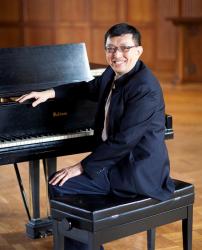
b. 1963 Person Name: Lim Swee Hong Meter: 7.5.7.5 D Composer of "ROMATA" in New Hymns of Hope Dr. Swee Hong Lim is the Deer Park Assistant Professor of Sacred Music at Emmanuel College, and the Director of the Master of Sacred Music Program. He also serves as Director of the Chapel for the worship life of Emmanuel College. Before joining Emmanuel on July 1, 2012, Dr. Lim served as an Assistant Professor of Church Music at Baylor University. Prior to his work at Baylor, he served as a Lecturer of Worship, Liturgy, and Music at Trinity Theological College in Singapore.
Swee Hong is widely utilized as a leader for global seminars and conferences dealing with sacred music. He currently serves as the Co-Moderator of the Worship Committee for the 10th General Assembly of the World Council of Churches for its meeting in Busan, South Korea (2013), and also served as a member of the Worship Planning Committee for the 2011 Ecumenical Peace Convocation sponsored by the World Council held in Jamaica. From 2008-2010, he chaired the Board of Worship and Music for the Trinity Annual Conference of the Methodist Church in Singapore.
Swee Hong holds a PhD in Liturgical Studies from Drew University, where his dissertation won the Helen LePage and William Hale Chamberlain Prize for Outstanding Dissertation. He also holds a Master of Arts in Sacred Music from Perkins School of Theology. He completed his undergraduate work in Church Music at the Asian Institute for Liturgy and Music in the Philippines. Swee Hong is well-published in global music, with his monograph, Giving Voice to Asian Christians, especially known among global musicians. He is also a prolific composer of hymnody.
By Swee Hong Lim, From: http://www.emmanuel.utoronto.ca/about/faculty/lim.htm, 24 June 2014.
Swee-Hong Lim
Joseph Haydn
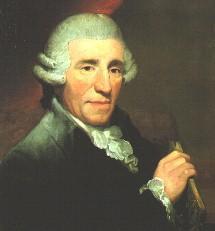
1732 - 1809 Meter: 7.5.7.5 D Composer of "TRUTH (Haydn)" Franz Joseph Haydn (b. Rohrau, Austria, 1732; d. Vienna, Austria, 1809) Haydn's life was relatively uneventful, but his artistic legacy was truly astounding. He began his musical career as a choirboy in St. Stephen's Cathedral, Vienna, spent some years in that city making a precarious living as a music teacher and composer, and then served as music director for the Esterhazy family from 1761 to 1790. Haydn became a most productive and widely respected composer of symphonies, chamber music, and piano sonatas. In his retirement years he took two extended tours to England, which resulted in his "London" symphonies and (because of G. F. Handel's influence) in oratorios. Haydn's church music includes six great Masses and a few original hymn tunes. Hymnal editors have also arranged hymn tunes from various themes in Haydn's music.
Bert Polman
Joseph Haydn


 My Starred Hymns
My Starred Hymns


